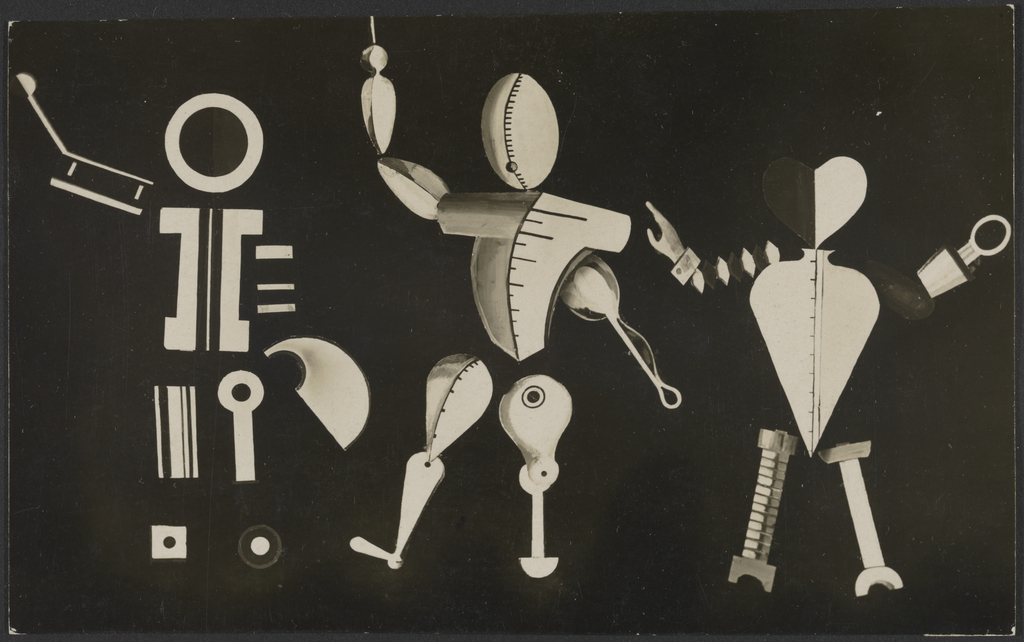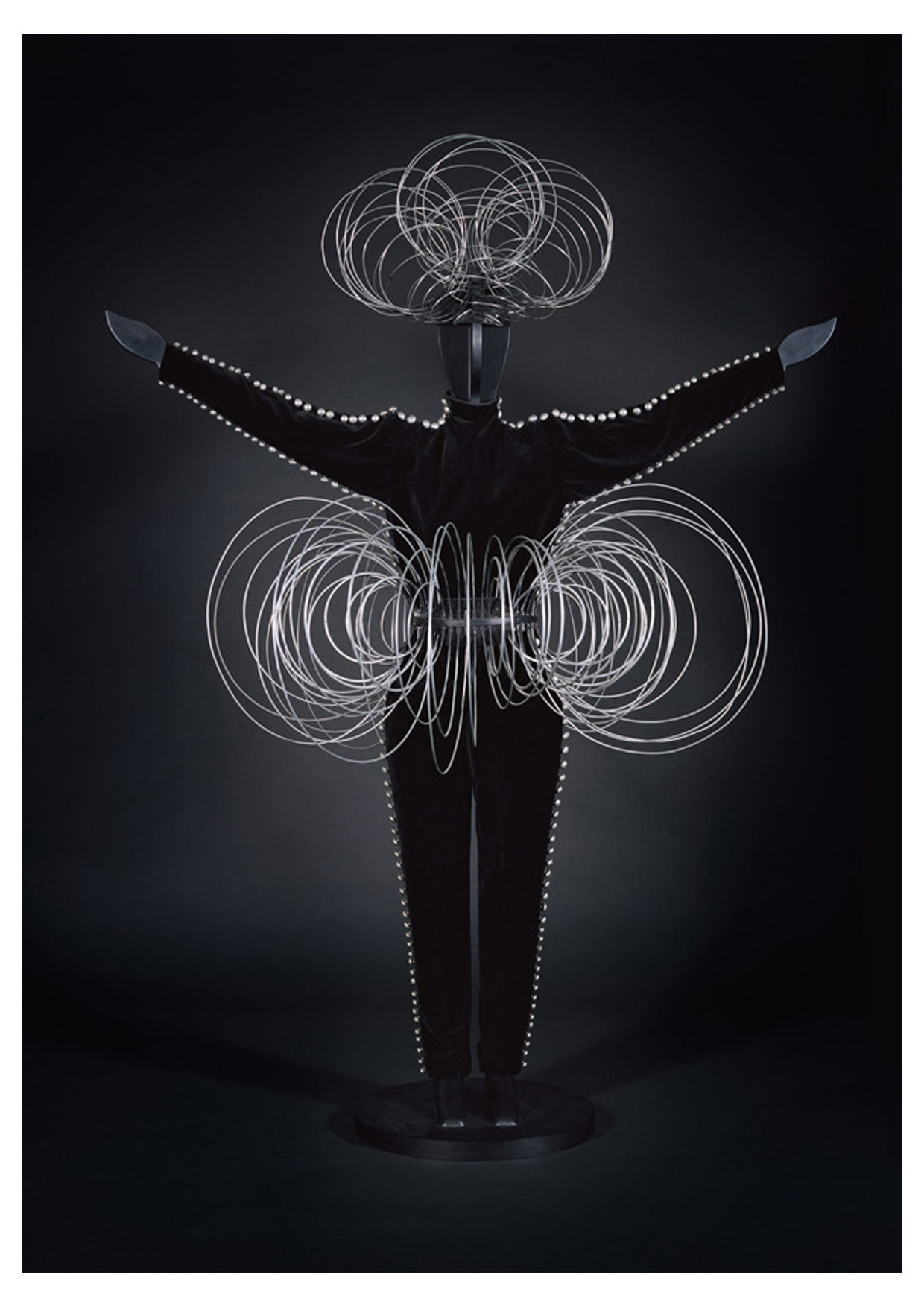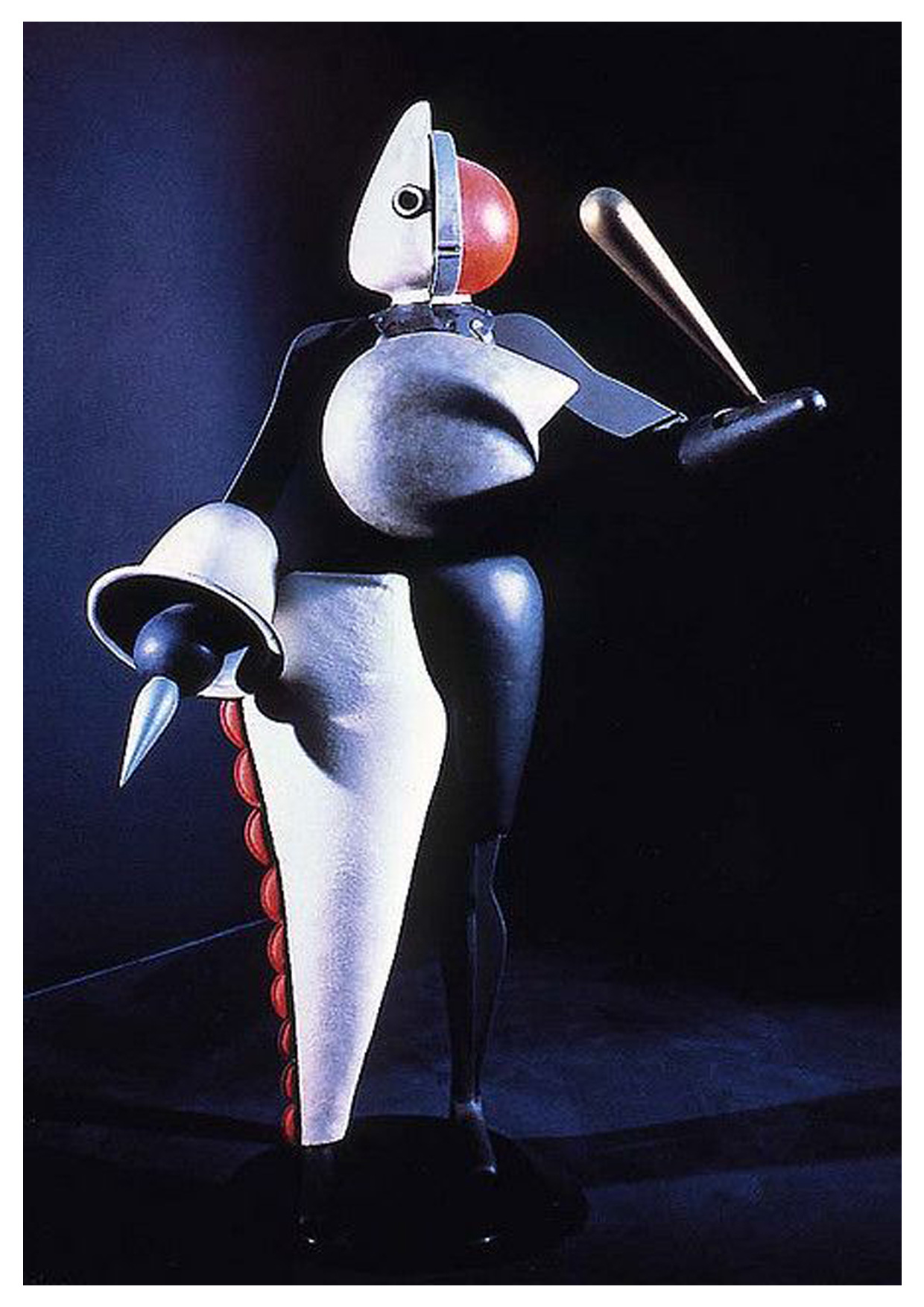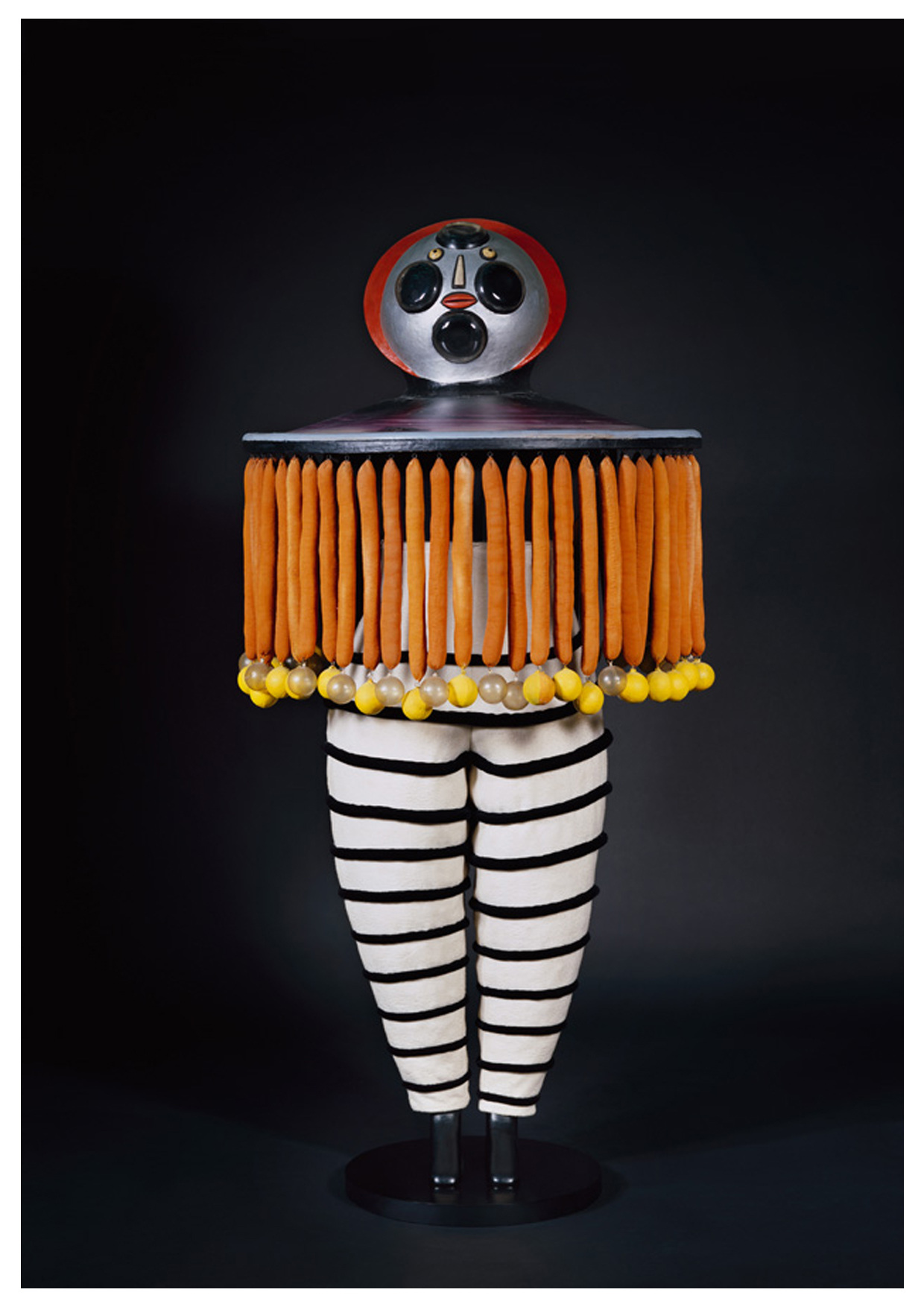oskar schlemmer
︎Artist, Sculpture, Theatre, Dance, Article
︎ Ventral Is Golden
oskar schlemmer
︎Artist, Sculpture, Theatre, Dance, Article
︎ Ventral Is Golden
︎ Ventral Is Golden
"Our guiding principle was that design is neither an intellectual nor a material affair, but simply an integral part of the stuff of life, necessary for everyone in a civilized society." - Walter Gropius.



If all cultural movements are a way to coodrinate the vibrations of a chatoic future during times of ideological collapse by recycling stable and persistent concepts of the past, then the Bauhaus movement of the 1920’s stood to reorganise the chaos of the First World War from which it was born, through principles it thought to be constant, beyond the affects of culture and politics, and above all else, simple.
Where the infrastructure of German economics had suffered greatly, the overarching mentality of the Bauhaus was to coalesce mass production with refined artistic expression, primarily in the service of people. Taking its main influences from Russian Constructivism and the English Arts and Crafts Movement, Bauhaus embodied a return to efficiency and serviceable design for public use, to deliver its users into a perfected, geometric paradise. It was however, during this time, that right wing nationalist ideologies took hold of Germany and later all Bauhaus schools were closed by the Gestapo due to the progressive ideas outlined in their manifesto.
One problem with delivering an industrial utopia that harmonises biology with technology is that it is almost always a provisional paradise that neglects the phenomenological reaction of the organic body within the space that the technology itself engenders. In the case of the Bauhaus movement, it was the intention of both Schlemmer and its founder, Walter Gropius “to introduce soul into the age of the machine” to counteract this void being filled by the rise of National Socialism, who’s reverse sentiment was “to introduce the machine into the soul“.



One of the most influential artists to formalise this ethos within the Bauhaus school was Oskar Schlemmer - a painter, sculptor, choreographer and costume designer, who was appointed ‘Master of Forms’ by Walter Gropius to specifically integrate the soul into mechanistic socialism.
One of Schlemmer’s most influential pieces was produced for stage and titled ‘The Triadic Ballet’ (1922). For Schlemmer, this work represented a leitmotif of the dualistic relationship between past and future, chaos and order, mechanism and organism, and was considered one of the first performance pieces that merged the subject matter of the human body with the automation of industry. In Triadic Ballet, Schlemmer would project the principles of industrialisation and mechanistic production directly onto the human body, using carefully crafted costumes, forged directly from new ideals of Brutalism, to restrict the fluid movements of the dancers.
"It is our task to become pioneers of simplicity, that is, to find a simple form for all of life's necessities, which is at the same time respectable and genuine."
The human body was taken as a kind of walking mathematical structure, pieces of a moveable machine, producing equations of rhythmic symbology. Within this relationship, Schlemmer saw the movements of marionettes as a more authentic striving for expression than that of a human lost in the machine world. He saw that the geometry of dance signified an emergence of ecstasy within the human spirit, and his ballet was a searching for this idealised form of expression inside the phenomenology of mathematics.



Most of the early Bauhaus ethos was generated by practioners of mythical status, such as Kandinsky and Itten (who were associated with the more spiritually inclined Theosophical movement) and centred on inter-disciplinary approaches with respects of creating Gesamtkunstwerk - the fusion of sound, light, color, form, and movement.
If we consider the architecture of Bauhaus or off-shoots like Brutalism, to be a kind of frozen minimalist music, caught between fortified economic expectations of a repressive government and the ethereal promise of a socialist paradise, then Schlemmer’s carefully choreographed composition was the melting process of the architecture of the body back into the fluid matrix of a geometric utopia.
As most of the modern world can be reduced to those same dualisms; linguistic constructs, subject and object, inner and outer space, thesis and antithesis, the masculine and the feminine, The Triadic Ballet also presented the ‘tertium quid’ - the third view, the unseen space between these dualistic conflicts - the Apollonian and Dionysian, the rational and the impulsive. Schlemmer saw that the dance acted as a synthesis of the poles, drawing from all facets of human exploration, from artistic expression to mass production, which gives his ballet the authenticity of a geometric tragedy.
Not only did large projects of Schlemmer’s body of work succumb ironically to the destruction of the National Socialist regime, but the true essence of the Bauhaus socialist paradise was seeded much earlier by people like William Morris and the English Arts and Crafts Movement, who felt art was an experience of community and community was an extension of society.
The Bauhaus school had a very similar sentiment, where the revival of medieval production techniques, such as sculpture, illuminated manuscripts and mosaics so popular to Morris’ era, could be extended into mass industrial technqiues of the post-war era, but instead of over production, the philosophy of Walter Gropius and the Bauhaus movement saw a practical dimesnion to spirituality, namely, to only engage in work which is the product of an inner compulsion, that can only have a spiritual and practical meaning by increasing enjoyment and not by increasing production only. Both philosophies were an attempt to preserve the human soul inside the simplicity of form and design.
![]()
If we consider the architecture of Bauhaus or off-shoots like Brutalism, to be a kind of frozen minimalist music, caught between fortified economic expectations of a repressive government and the ethereal promise of a socialist paradise, then Schlemmer’s carefully choreographed composition was the melting process of the architecture of the body back into the fluid matrix of a geometric utopia.
As most of the modern world can be reduced to those same dualisms; linguistic constructs, subject and object, inner and outer space, thesis and antithesis, the masculine and the feminine, The Triadic Ballet also presented the ‘tertium quid’ - the third view, the unseen space between these dualistic conflicts - the Apollonian and Dionysian, the rational and the impulsive. Schlemmer saw that the dance acted as a synthesis of the poles, drawing from all facets of human exploration, from artistic expression to mass production, which gives his ballet the authenticity of a geometric tragedy.
Not only did large projects of Schlemmer’s body of work succumb ironically to the destruction of the National Socialist regime, but the true essence of the Bauhaus socialist paradise was seeded much earlier by people like William Morris and the English Arts and Crafts Movement, who felt art was an experience of community and community was an extension of society.
The Bauhaus school had a very similar sentiment, where the revival of medieval production techniques, such as sculpture, illuminated manuscripts and mosaics so popular to Morris’ era, could be extended into mass industrial technqiues of the post-war era, but instead of over production, the philosophy of Walter Gropius and the Bauhaus movement saw a practical dimesnion to spirituality, namely, to only engage in work which is the product of an inner compulsion, that can only have a spiritual and practical meaning by increasing enjoyment and not by increasing production only. Both philosophies were an attempt to preserve the human soul inside the simplicity of form and design.



Further Reading ︎
Triadic Ballet; Dritter Teil: Schwarz
Pole Dance, video
How Bauhaus redefined Society, NY Times How the Bauhaus Kept the Nazis at bay, Until it Couldn’t, Bloomberg William Morris, Father of Bauhaus?, article
Triadic Ballet; Dritter Teil: Schwarz
Pole Dance, video
How Bauhaus redefined Society, NY Times How the Bauhaus Kept the Nazis at bay, Until it Couldn’t, Bloomberg William Morris, Father of Bauhaus?, article